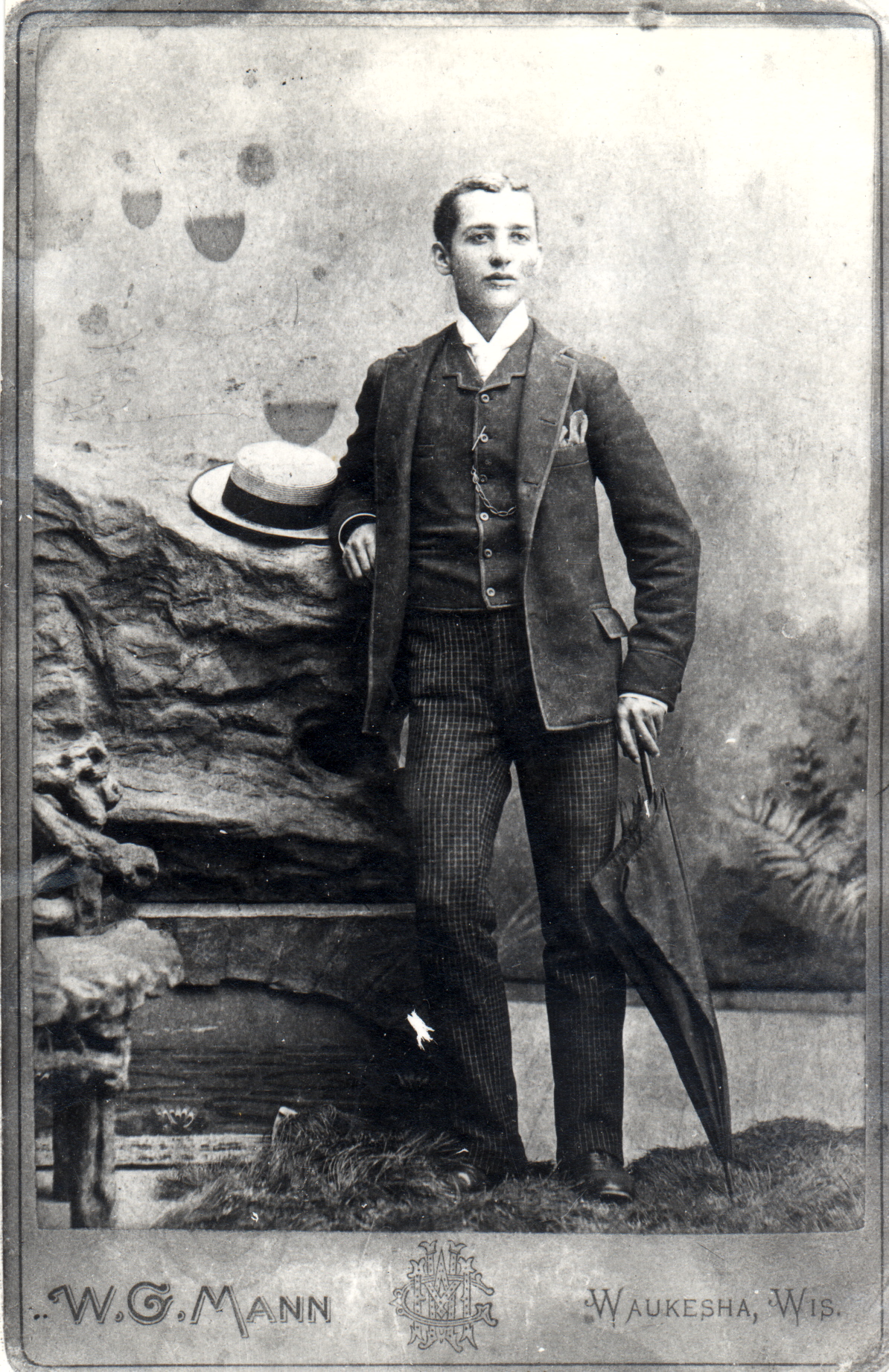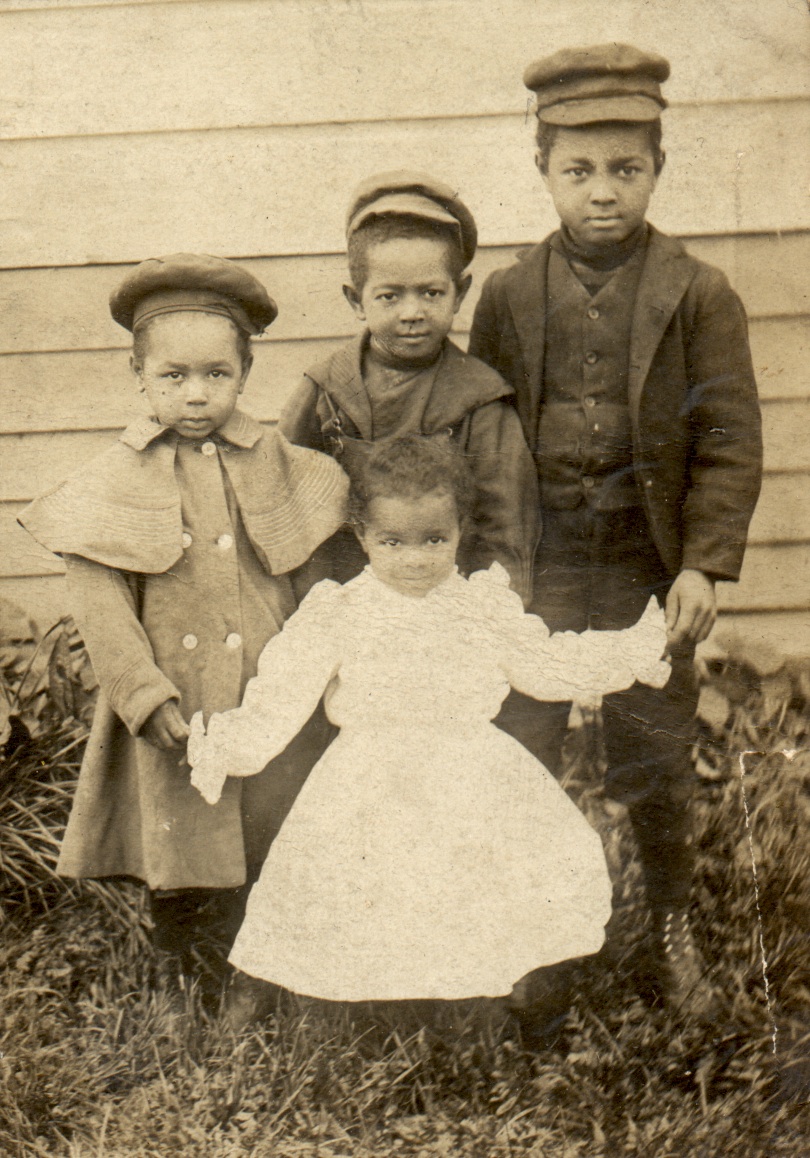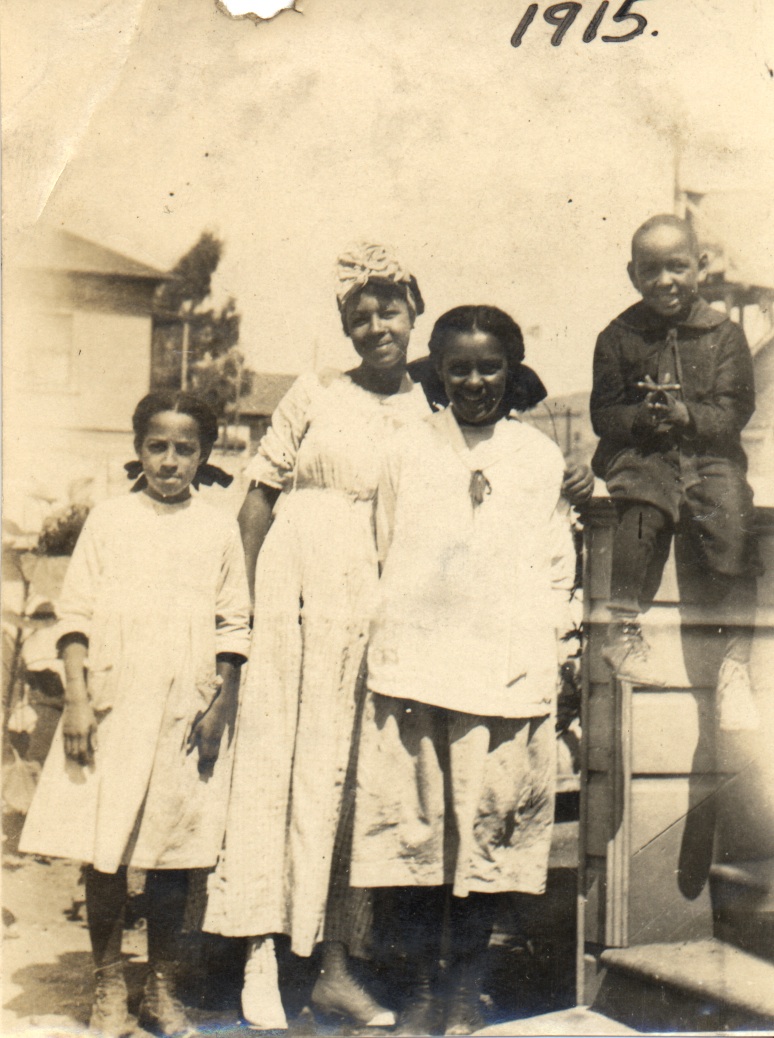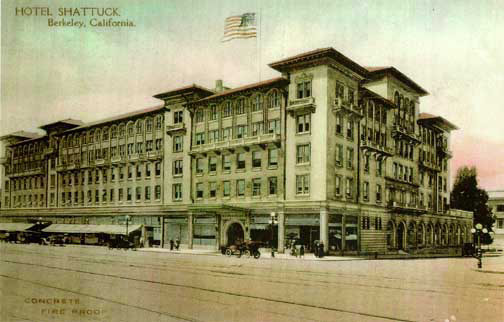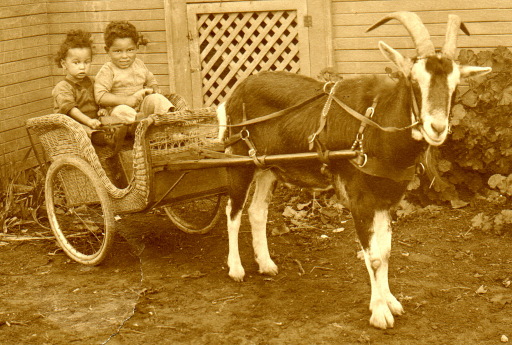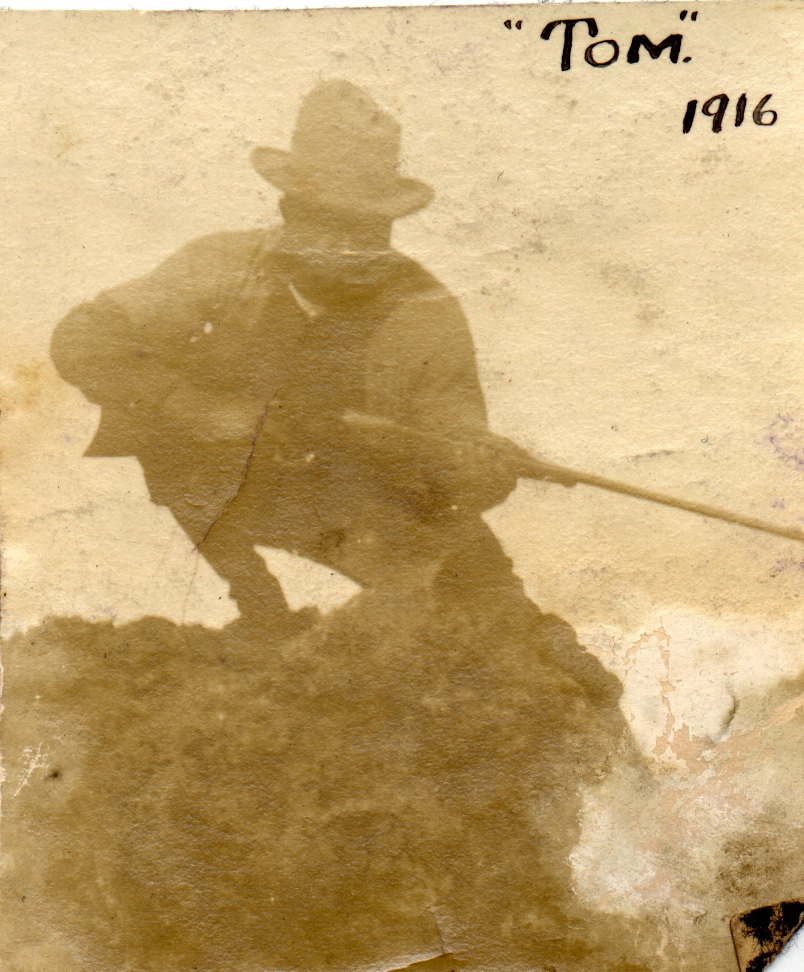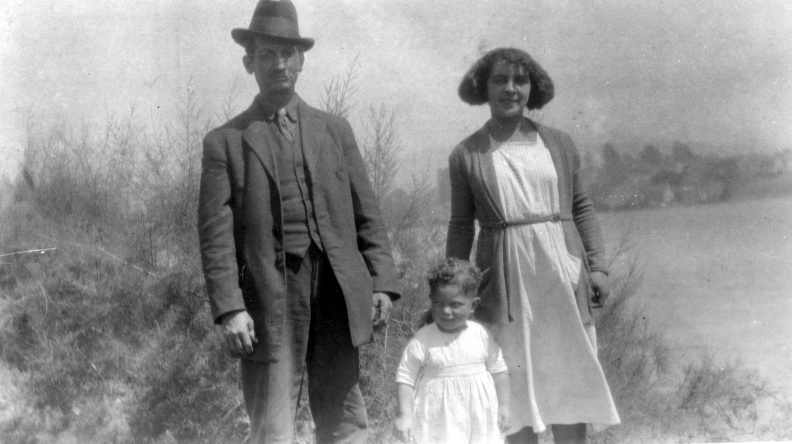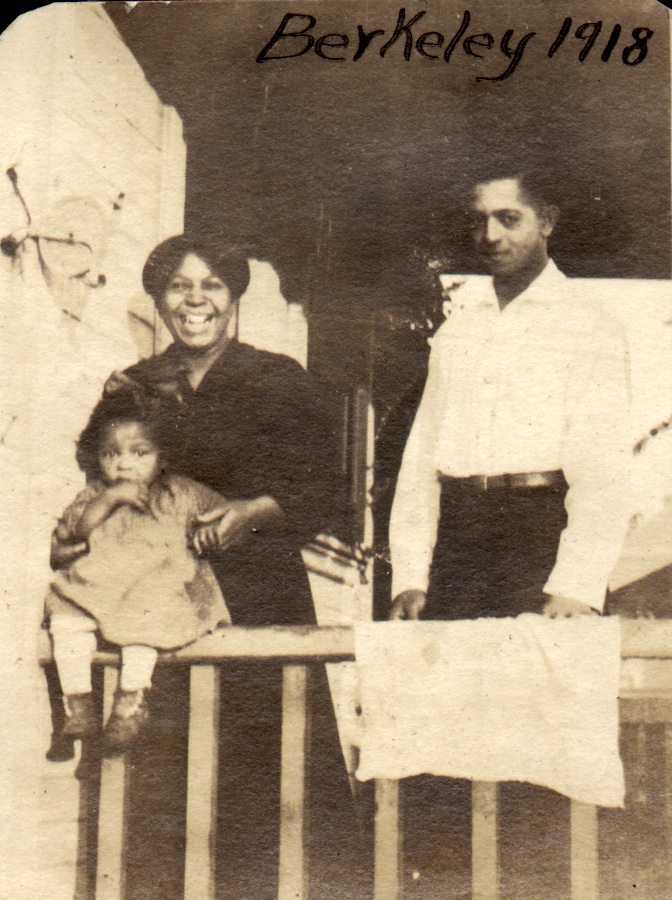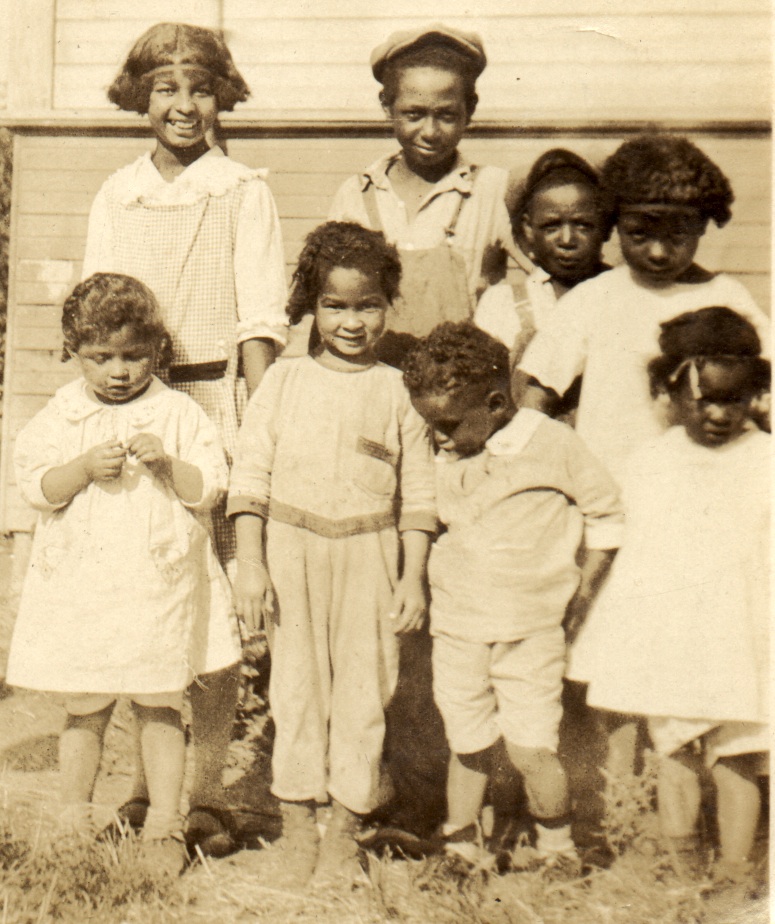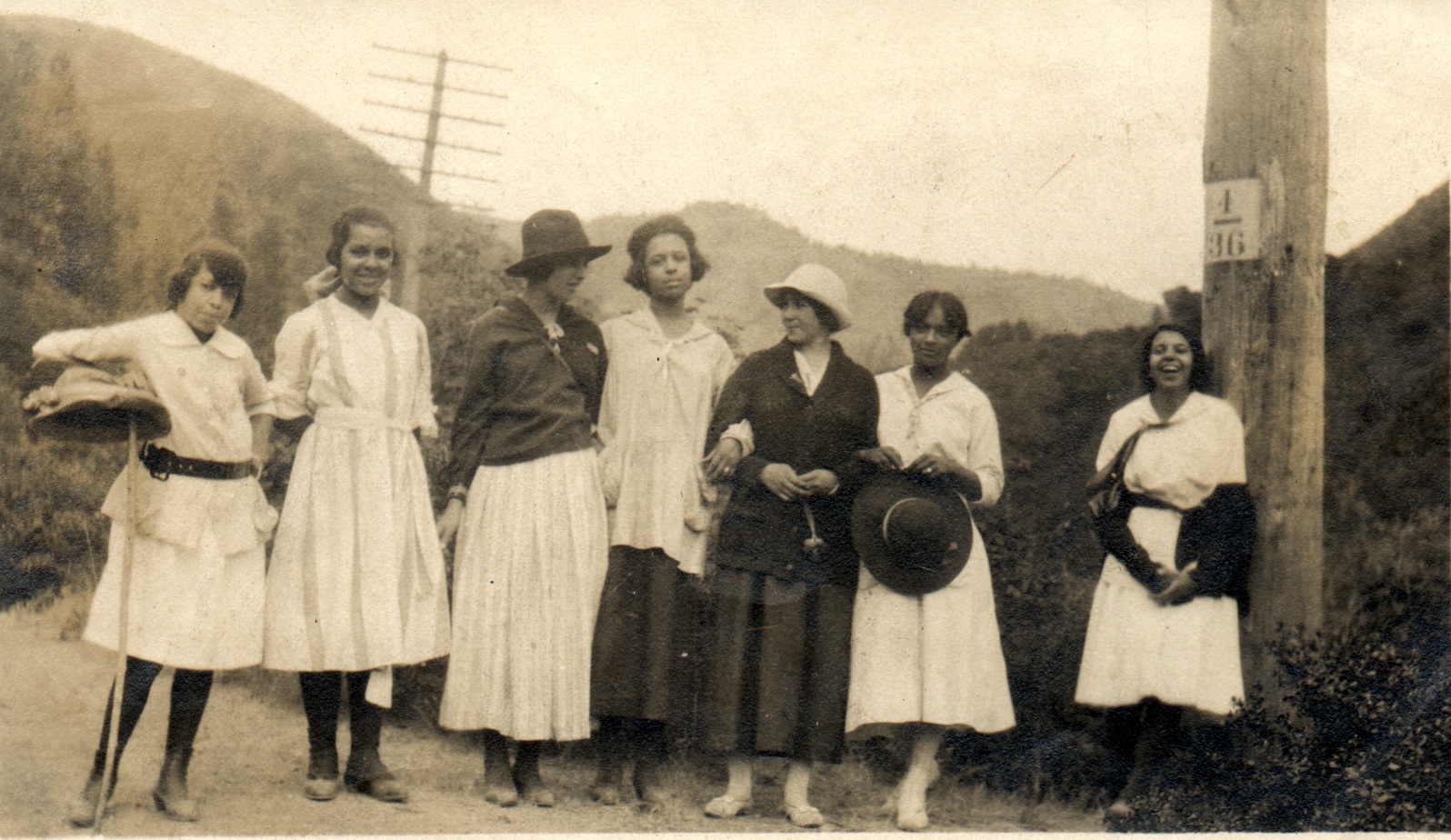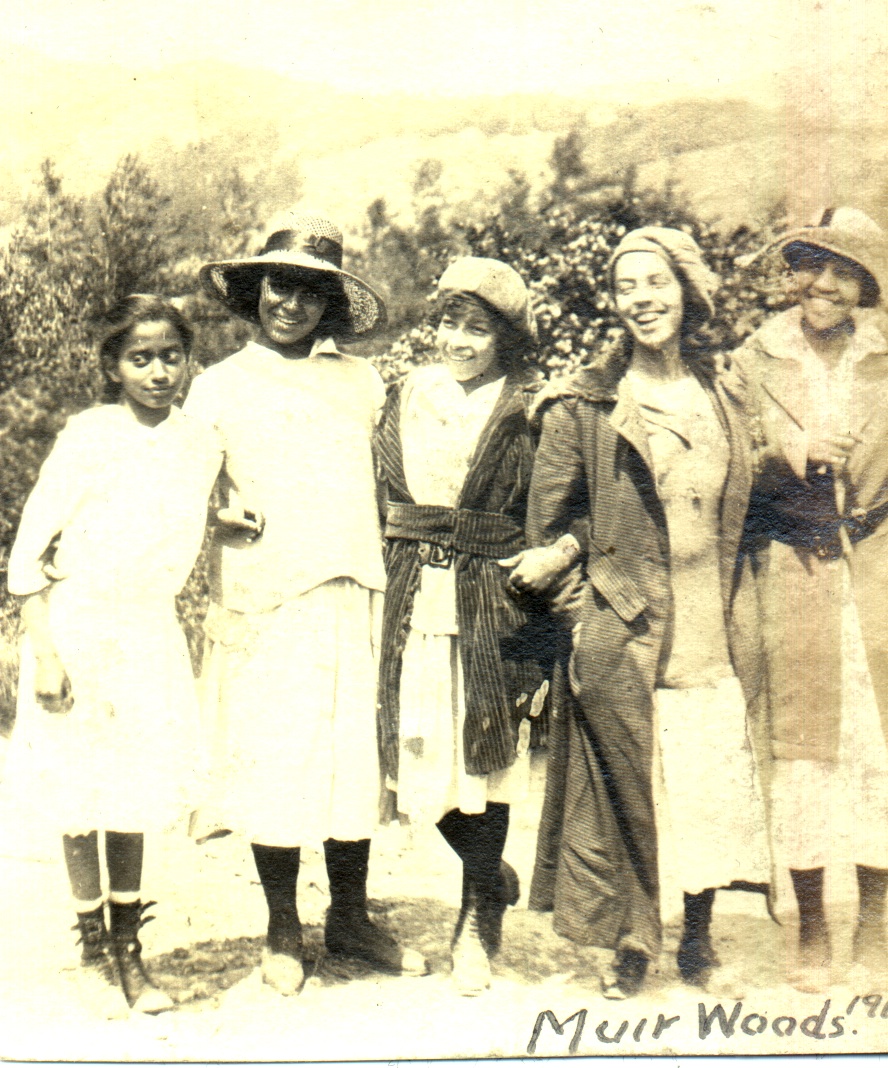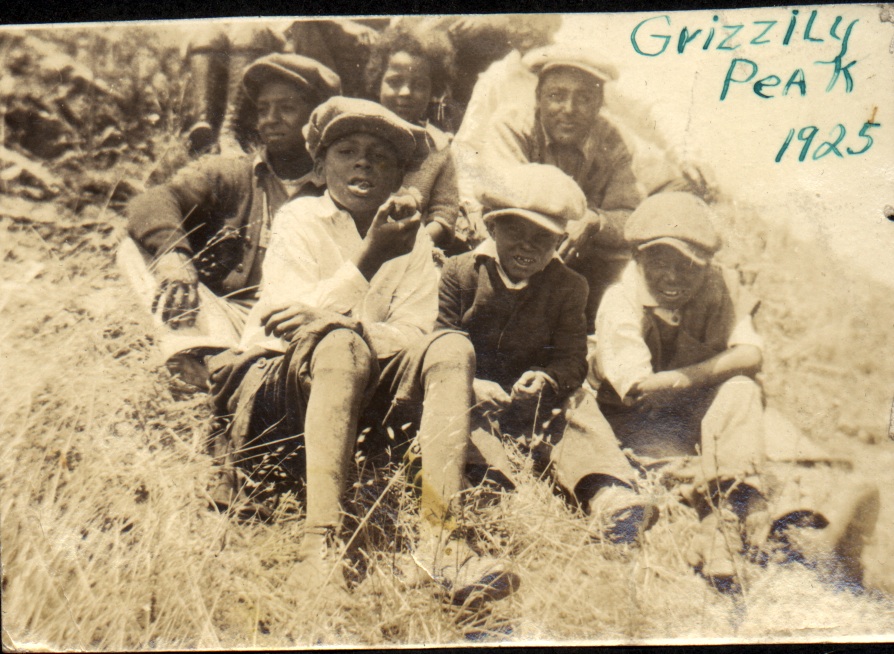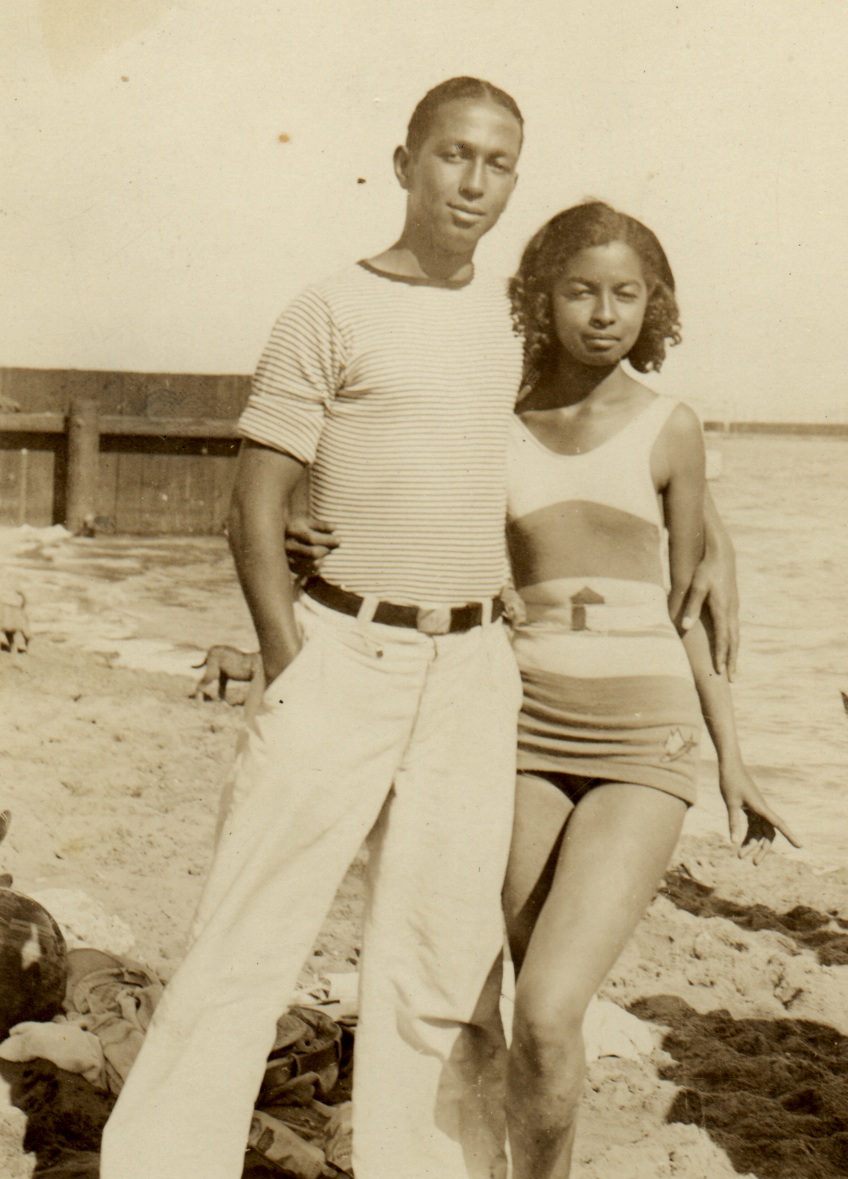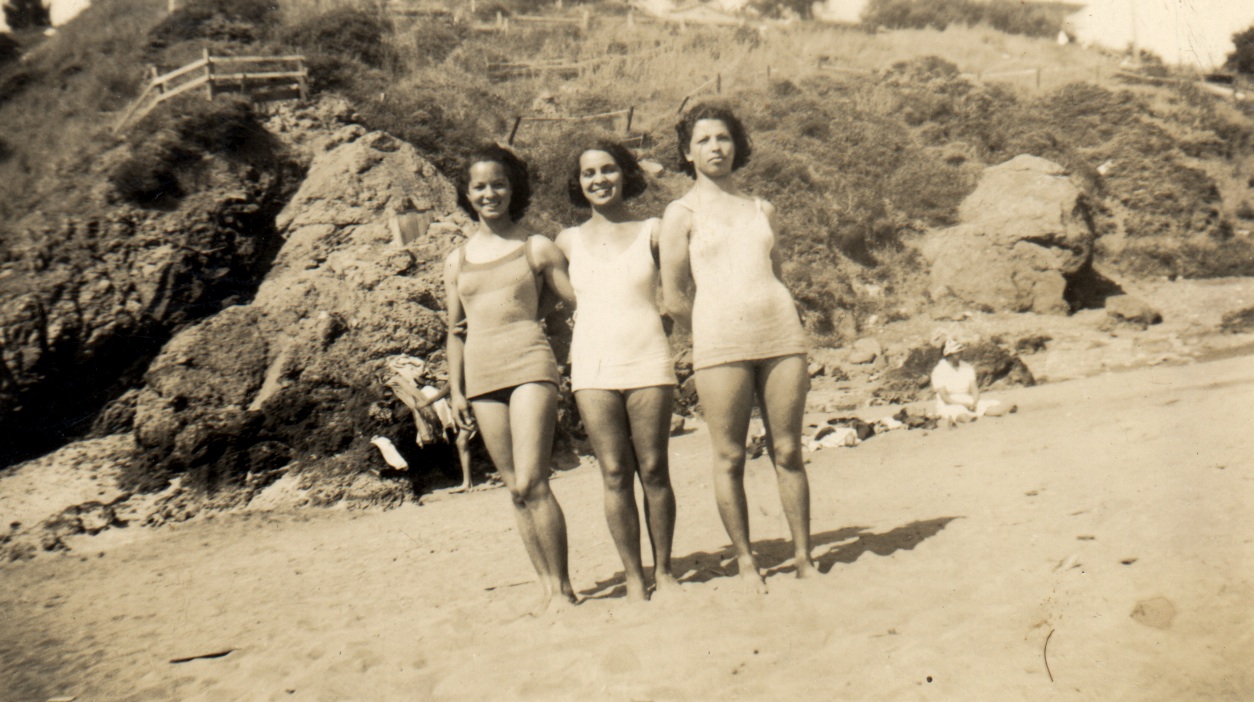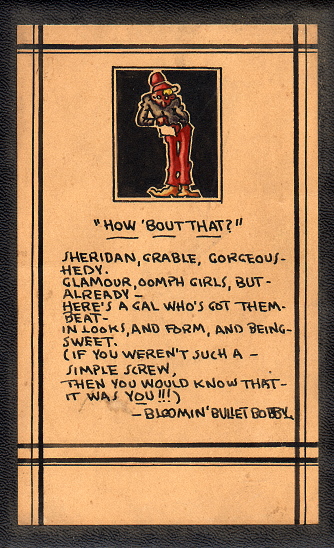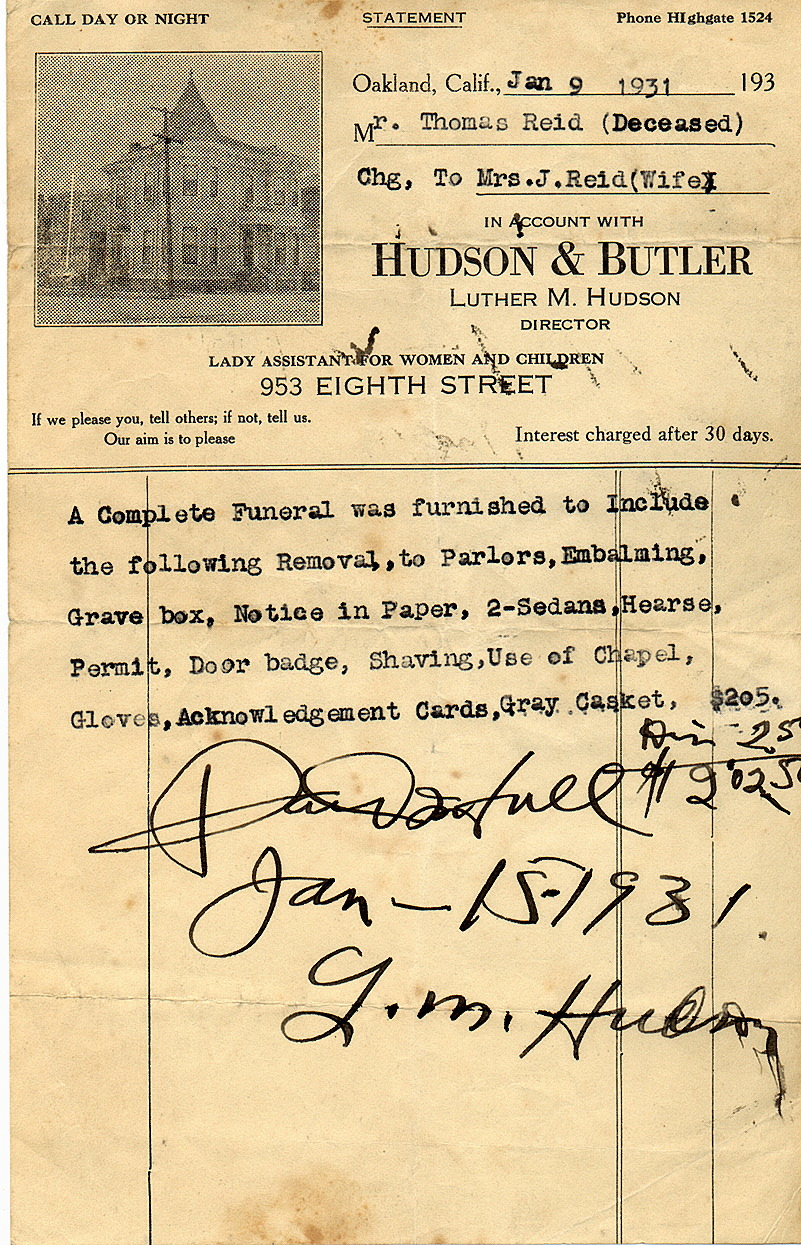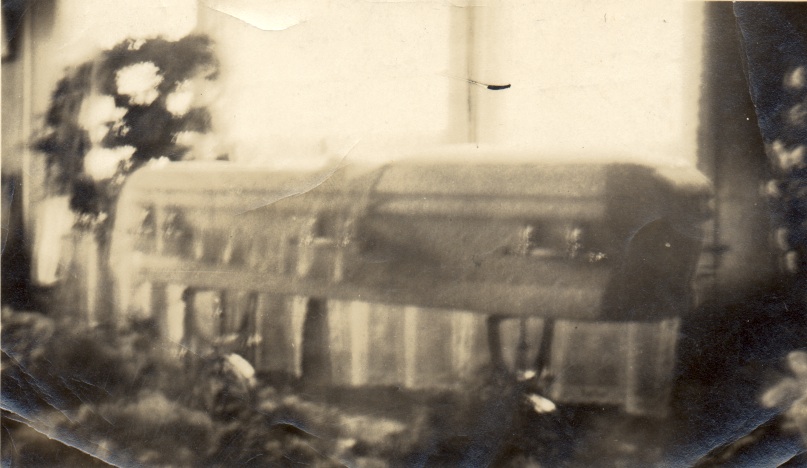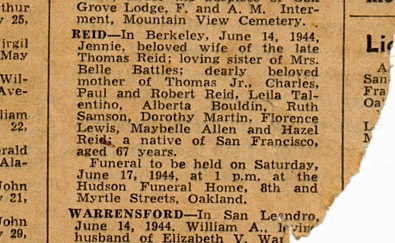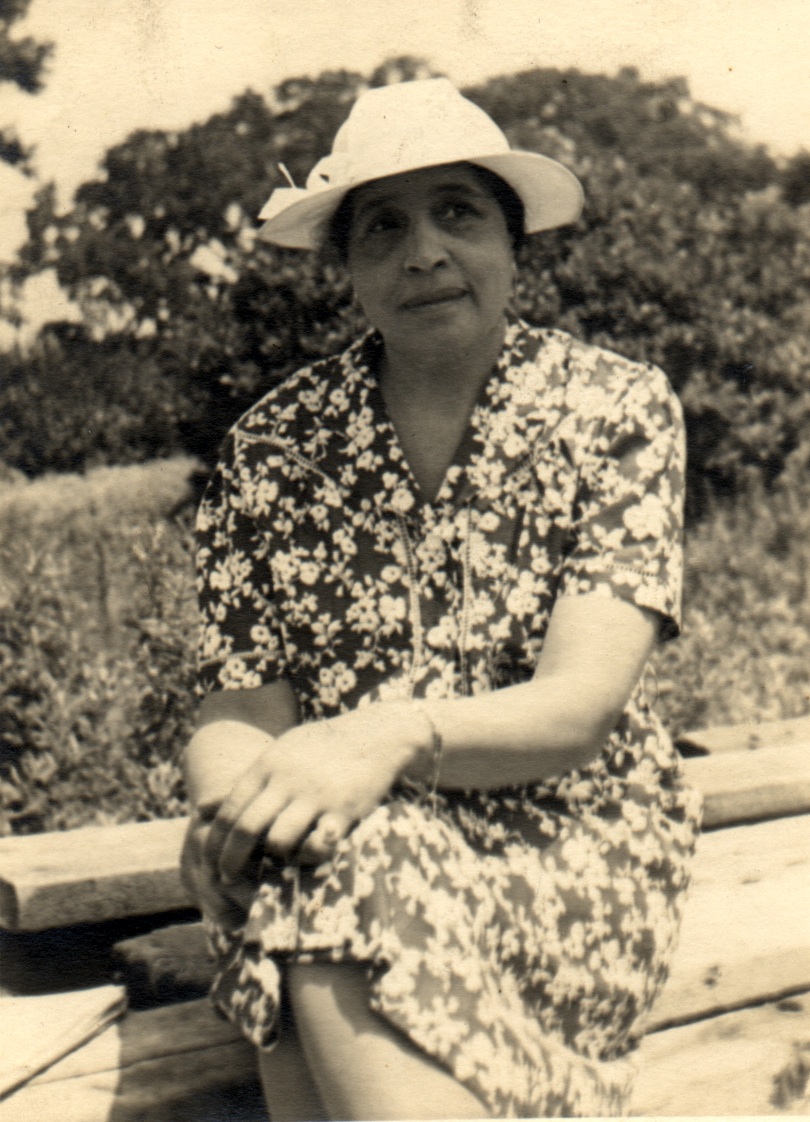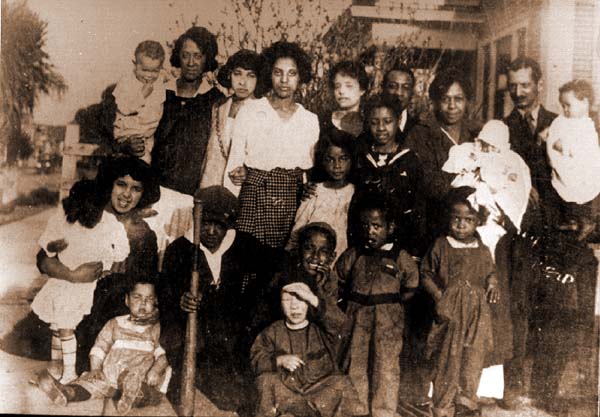THE REID-GALT-TURNER-PARKER PAGES |
THE REIDS OF BERKELEY, CALIFORNIA From the distance of more than a century, they seem an unlikely couple. Thomas Reid, Sr. was living the fast life, reportedly a bouncer in saloons along San Francisco's barbary coast—and possibly a part-time bodyguard for professional boxer Gentleman Jim Corbett—when he met Virginia (Jenny) Parker in a San Francisco church sometime in the early 1890's. Virginia was a deeply spiritual woman and a devout churchgoer who did not take part in San Francisco's raucous night life. But in the tense, racially oppressed days of the end of the 19th century, there were some things that they had in common. The Reid family stories are that Thomas had to flee his native Griffin, Georgia, ahead of a white lynch mob. Virginia was born into a family with a history of actively fighting such injustices. Her grandfather, William Henry Galt, was one of the founders of the Sacramento Zouaves militia that organized to keep California from joining the Confederacy in the Civil War. And Virginia's father, Edward Parker, Sr., was an active member of the California Colored Convention Movement, formed to assist escaped captive Africans in the years of slavery, and then to promote African-American civil rights issues in the years following the Emancipation Proclamation. Her first cousin, William Patterson, became one of the leading African-American radical activists of his time, one of the top Black members of the American Communist Party, a defender of the Scottsboro Boys in their rape trial, and the author of the "We Cry Genocide" petition delivered by Paul Robeson to the United Nations in 1951.
Maybelle Reid Allen, one of Thomas and Virginia's daughters, often repeated the story that Virginia told of the impression Thomas made in church. He was a handsome man—pictures confirm that—and being single, was attractive to many of the church women. He may have been an usher, and Virginia said that as he walked up and down the church aisles, some of the women would manage to get the Holy Ghost and fall out exactly as Thomas passed them, so that he would have to catch them in his arms before they hit the floor. There is no Reid family story that now recounts who caught who, between Thomas and Virginia. Whatever it was that attracted Thomas Reid and Virginia Parker to each other, they were attracted, fell in love, and eventually decided to marry. According to family stories, Thomas gave Virginia a choice: stay in San Francisco where Thomas could continue to make good money in the barbary coast saloons, or move into the country, where life would be tougher, but they could live as proper Christians. Virginia chose the country. Family documents show that they were married in San Francisco in February, 1897, two months after the birth of their first son, Thomas Henry Jr., in San Francisco.
Sometime in 1897 or 1898, the couple moved to Angels Camp, California, a gold mine boom town in the Sierra Nevada foothills just east of Sacramento. Three more children were born in that town: Charles Rogers Sr. (middle name given for one of Thomas' closest friends) in 1898, Leila (named for Thomas' sister) in 1901, and Alberta (named for Virginia's closest cousin) in 1902. Family records and oral history do not reveal what type of work Thomas did while the family lived in Angels Camp. There are indications that things were difficult, however, as Thomas had to return to San Francisco at least once for work while Jenny and the children remained in Angels Camp.
Eventually, the family returned to the Bay Area, living briefly in Oakland, perhaps, where daughter Ruth was born in 1904, and then to Oregon Street in Berkeley, where eight more children were born: Ralph (1906), Clarence (known to everyone as "Boots") (1908), Paul (nicknamed "Cud") (1912), Dorothy (1914), Florence (1916), Robert (1917), Maybelle (1920), and Hazel (1923).
The family had its share of childhood tragedies, something that was still not uncommon in the first years of the 20th century. In 1910 Ralph, the sixth child, died at the age of four, probably from a brain hemorrhage, after falling off a tricycle. The doctor examining him could not understand how a fall from such a short distance could have been fatal to a healthy child, and it was only then that Thomas and Virginia learned that some weeks earlier, Ralph had fallen on his head from the top of a fence; one of the older sisters had sat him up there to watch the train go by. Ralph seemed to suffer no ill effects from the fall, so the children didn't tell their parents. In 1924 or '25, one of Virginia's brothers returned to the Bay Area with tuberculosis (then widely-called "consumption") contracted during a merchant marine job overseas. He later died. Without knowing the danger involved, several of the uncle's clothes were passed around to the Reid children, and at least two of them, Boots and Paul, contracted tuberculosis from the contact. Paul spent a year in a sanitarium and lost a lung. Boots died in 1925 at the age of 17. By then, the family had learned to protect themselves from the disease. Maybelle remembers being passed down books that Paul had finished with at the sanitarium, but could only handle them after they had been sterilized by being left in the sun for several days. In the 1920's, the bodies of the deceased were typically kept at the houses for wakes that lasted until the funeral, rather than taken to a funeral home. One of Maybelle's earliest memories was of Boots' body lying in a casket in the living room at the house on Oregon Street. It was summertime, and the windows had to be left open to let the air in, and Maybelle remembered passing by the door to the living room late at night and seeing the drapes stretched out and slowly fluttering over the casket as if they were moving hands, a memory she carried with her until the end of her life. Thomas was by all accounts a hard worker, but work was difficult to find for African-Americans in the Bay Area even before the Great Depression of the 1930's. He was an accomplished carpenter, but family stories say he was kept out of the best-paying jobs because of his race. He reportedly was able to work on construction Berkeley's Shattuck Hotel, however, and pointed the hotel out to the children when he took them on walks in downtown Berkeley.
The lack of good-paying work for a man who should have been a journeyman carpenter made things difficult for the family, leading to many stories about the hard times they endured. One of the best stories was often told by Mel Reid, son of Thomas Jr. and Thomas Sr. and Virginia's first grandson, who later said that photographers used to go through Berkeley with animal carts during the early 1920's, taking photographs of children on the carts. "The fellows with the pony carts would charge the highest," Mel would say. "The ones with the goat carts charged less. You could always tell the Reid childrens' pictures, because we were always the ones on the goat cart."
But even with hard times, it wasn't all work for Thomas. He was an avid hunter, and hunted the Berkeley and Oakland hills at a time when they were almost absent of houses. He sometimes took his two oldest sons, Tom Jr. and Charlie, with him. One of the favorite hunting stories was that one day Papa Reid, Tom Jr., and Charlie were hunting late at night in the hills, using a kerosene lamp to light their way. After a while, one of them noticed that two small flickers of light, reflecting the light from their lamp, were moving alongside them in the woods. At first they thought it might have been another group of hunters carrying two lamps, some distance away in the woods, but finally they realized that it was a mountain lion who was trailing along beside them as they walked, either hunting them or fascinated by the lamp from the light. Papa Reid quickly set the light down in the pathway, and told the boys to quietly back away. As they did, they could see that the mountain lion stayed where he was, continuing to watch the light from the kerosene lamp. When Papa Reid and the boys were a sufficient distance away, they took off running. There is evidence that Tom Jr., at least, was not deterred by the experience, and retained his father's love of hunting into his adulthood. Several photographs have survived of Tom Jr. hunting in the hills above Berkeley and Oakland.
There are also stories that "Papa" (Thomas) retained a love of hard spirits even though Virginia disapproved, and would sometimes, under the influence, sing at the family table after a day of hard work. Maybelle once recalled one of those songs, an old minstrel tune from the late 19th century with the refrain of "coon, coon, coon, I wish my color would fade." Maybelle said that their Papa was kind, benevolent, and patient with his children by the time the last set of them were coming up, but said that the older children had a different memory, one of a strict disciplinarian. "Ruth used to say that 'Papa was mean,'" Maybelle would say, with an emphasis on the "mean." "But I didn't remember that."
Asked once to describe her mother, Maybelle answered, simply, "She was always smiling. She always had a smile on her face." She was also a voracious reader, both of the Bible and of newspapers, and after her eyesight went bad, would often be seen leaning over book or paper with a magnifying glass. She kept up with current events, and while radio was still in its infancy, told her children that one day they would not only hear broadcasts on the radio at home, they would also be able to see broadcast pictures. The children thought Mama was crazy. Virginia was always encouraging her children to do better for themselves, often telling them to set their goals high. "You've got wings," she would say. "You can fly."
The Reids were a multigenerational family in a way that was common a hundred years ago, but is more rare these days. The number of children was so large that by the time the youngest children of Thomas and Virginia were being born, several of the oldest children had come of age, moved out, married, and were having children of their own. Thomas Jr.'s children—Mel and Muriel—Charlie's two children by his first wife, Irma—Donald and Bertha—and his three children by his second wife, Beryl—Charles Jr., Ivy, and Florrie—Leila's son, Sonny, and Alberta's two sons—Georges and Gilbert—were all born around the time of the last children of Thomas and Virginia. Many of the grandchildren spent so much time at the Reid house in Berkeley that it was difficult for outsiders to tell that they weren't actually first generation children themselves.
It was an active and multi-talented family as well, always outdoors. Picnic outings, hikes, and swimming trips were always being organized by the Reid children and their friends into the hills above Berkeley and Oakland. One of the favorite family summer outings was to catch the ferry from Berkeley to Larkspur early in the morning, hike over Mt. Tamalpais, spend the day at Stinson Beach, and then hike back over the mountain to catch the ferry back home.
The Reids were a multitalented family. Most of the children were athletic, and were active in the pickup street football and baseball games that were common in Berkeley in the through the Depression years, as well as with more formal, organized sports activities at such local recreation centers as Berkeley's San Pablo Playground. Some of the family members went on to wider athletic fame. Charles was a star pitcher in the West Coast semipro Negro Leagues. Mel, Tom Jr.'s son, was a two-sport star, excelling at football at Berkeley High and in college, and later playing semi-pro baseball. One Reid grandchild—Dennis Pete, son of Dorothy and Herman Pete—briefly tried out with the Oakland Raiders professional football team, missing the cut on the last day of the preseason. And one Reid great-grandchild—Todd Lewis, son of Ivy Lewis, Charles' daughter—played in the National Football League while Todd's sister, Linda Lewis Daglow, was a high school track star. Music was another Reid talent. Several of the Reid children, including Leila, Ruth, Paul, and Florence, played the piano or other instruments. One of the most poignant family stories is that Ruth—who was close to her younger brother Boots—never played the piano again after his death. In later years, however, Aunt Ruth entertained many of her nieces and nephews accompanying her singing on the ukulele. One of the Reid grandchildren—Tarika (Joan) Lewis, daughter of Florence and John Henry Lewis—is a professional jazz violinist and teaches music at various Bay Area schools. In addition, Robert was a talented artist, producing numerous cartoons (signed with his pen name "Bloomin' Bullet Bobby") that survive to this day.
Few stories survive of family economic conditions during the years on Oregon Street although given the times—the first twenty years of the 20th century—it is safe to assume that things were difficult. Thomas apparently worked at several jobs to make ends meet, the last one as a janitor at the Wonder Bread bakery in Berkeley where his son, Tom Jr., managed the loading dock. Working conditions for Thomas were difficult at Wonder Bread. He was in his early 60's by then, old for those times, and part of his work involved mopping floors in perpetual dampness. He contracted pneumonia, probably from the job, but in an era before workman's compensation laws, he had no choice but to continue working. One evening he walked the several miles from the Wonder Bread bakery to home, got into bed, and never got up again. He died in January of 1931.
The family fell on hard times following the death of Thomas Reid in 1931. Paul was 19, and it is probable that he had either left home by that time, or left shortly afterwards. But the five youngest children—Dorothy (17), Florence (15), Robert (14), Maybelle (11), and Hazel (8)—were still living at home and in school. Dorothy probably went to work to supplement the family income, and several of the older children who had already moved out and had families of their own contributed as well. But things were difficult. Virginia was forced to give up the home on Oregon Street, moving the remaining family to a smaller home on California Street in Berkeley. She remained there for the rest of her life, as one by one, the remaining children married and moved out. She passed away in 1944.
One of the stories of Virginia Reid's passing is one of the most poignant of the Reid tales. Virginia was very close to one of her cousins, Alberta Postles (Cousin Bertie), who had moved to New York, and the two women corresponded frequently by mail and by talked by telephone. Cousin Bertie was supposed to come back to Berkeley for a visit, but the trip had to be postponed by Virginia's illness. One of the most difficult things the Reid sisters had to do following their mother's death was to call Cousin Bertie to inform her of the news. When they did so—several hours after Virginia's death—they received a second blow: Cousin Bertie had also passed away, earlier that same day. For a while, from the time they were given, the family believed that Cousin Bertie had died exactly three hours earlier than Virginia. It was not until some time later that the family, figuring in the time zone difference between the east coast and the west coast, realized that Virginia and her dear Cousin Bertie had passed away at almost exactly the same time.
A Portrait Of Reid Family Members And Friends (This photograph is undated and the location unidentified, but given the age of the known children in the photo, it was probably taken about 1921 or 1922, and it was also probably taken in Berkeley, California. Known Reid Family members in picture: Top Row Standing—Ruth Reid, third from left; Virginia (Jenny Reid), seventh from left; Thomas Reid Sr., eighth from left; the two children being held by Virginia and Thomas are probably Maybelle and Bertha Reid, who looked very much alike when they were young and were approximately the same age; Second Row Standing—Dorothy Reid; Third Row Sitting—Alberta Reid, second from left; Florence Reid, sixth from left; Bottom Row Sitting—Mel Reid, first from left. The rest of the people in the picture are neighbors and family friends we are currently unable to identify, although it is probable that the woman fourth from the left in the top row is Irma Reid, first wife of Charles Reid and mother of Bertha. If that is the case, it would suggest that the person who took this picture was Charles Reid Sr., who was an avid photographer during this period and took numerous family pictures between 1918 and 1924. To our knowledge, there is not a more complete photograph in existence of Thomas and Jenny Reid and their 13 children. A complete photograph of the entire family would, in fact, be impossible as Ralph, one of the first set of the Reid's thirteen children, died at the age of four before many of the younger children were born. -- JDA-T) |


